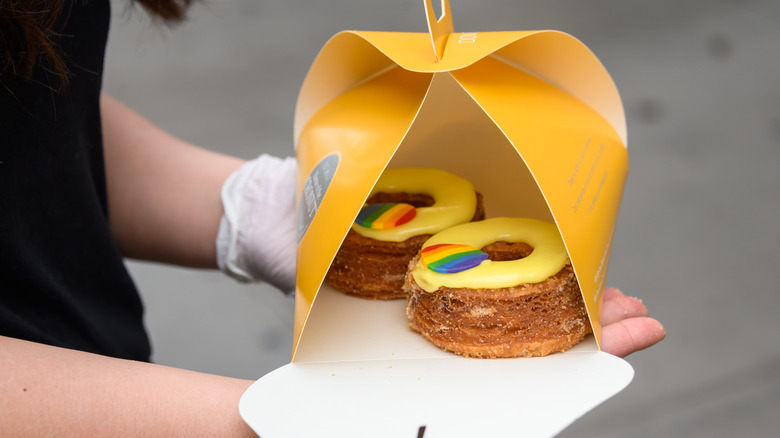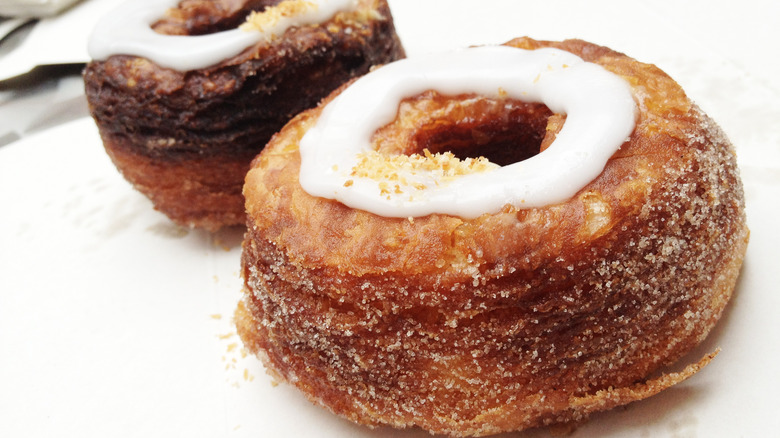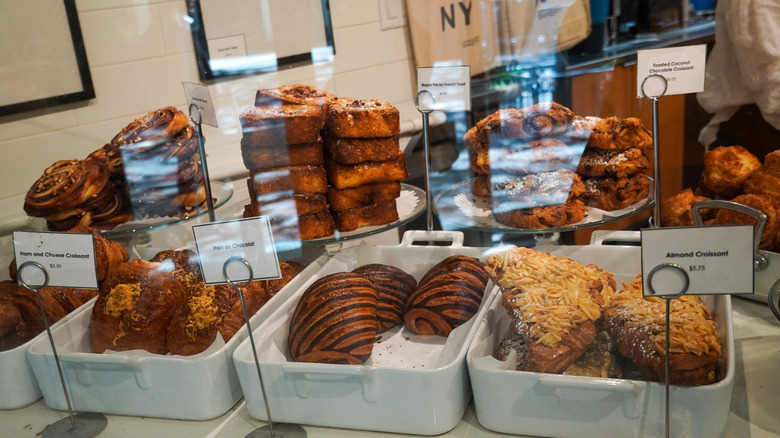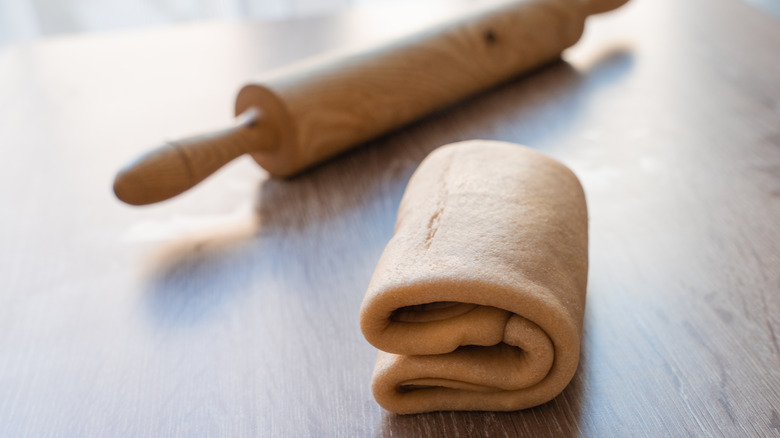The True Origin Of The Cronut
Grub Street put a spotlight on a pastry that was set to be unveiled at the Dominique Ansel Bakery in New York City, during 2013. Writer, Hugh Merwin, said the pastry was a bit of a game-changer because it showcased a technique that hadn't actually really been done before with much success and involved, at least to the uninitiated, the act of frying up croissant dough in a deep vat of oil and emerging with a donut on the other side.
That creation, known as a cronut, was born out of Ansel's realization that his bakery didn't have the one staple everyone else did — a donut. And while Ansel explained that he'd had donuts before, CN Traveler also said he was more enamored with the light, buttery dough best represented by a croissant, than he was with the stodgy ball of dough with a film of grease and granulated sugar that a badly made donut can be. And that was when he got to work.
It took chef Dominique Ansel more than 10 recipes to get the cronut right
As it turns out, marrying the shape of the donut with the dough of a croissant to create the cronut wasn't as simple as it looked. As Ansel later revealed to CN Traveler in 2016, it took him three months and experimenting with more than 10 recipes before he was happy with the recipe he uses today. "I think about something I want to make, analyze the recipe, and then test it from a recipe I have or one I make up myself. I tweak it day after day, and I test every day. I test it 60 or 70 times before I get something I like, and we still tweak after we launch," Ansel told The Village Voice back in 2013 (via Web Archive).
Every day, the cronut output at Dominique Ansel Bakery hovers at 500 to 600 (via YouTube), versus the 350 that he was producing before. However, making the cronut hasn't really evolved to become a more efficient process. It still takes three days — from start to finish — to prepare everything from the ganache and the pastry dough (day one), to the laminating process (day two), and then the cutting and frying (day three), according to Four.
Dominique Ansel has created other innovative pastries after the cronut
Even if he's moved on and has created other memorable pastry creations like the "frozen s'more": a marshmallow concoction filled with vanilla ice cream covered with chocolate wafer (via Web Archive), we can only imagine that Dominique Ansel will always have a soft spot for the pastry that cemented his position in pop culture. He said: "I love the Cronut — I think it's a great product. It's different and unusual, and I'm glad to have so many fans. It gives me a chance to showcase all the other things. And I don't want to turn into a Cronut shop — we do as many as we can every day, but we keep innovating and making new things."
Still, Ansel is dedicated to keeping a strict eye over his cronuts, so that folks who have traveled far and wide to enjoy an Ansel original will know that their time and money is well spent. It also explains why, even after so many years, the popularity of the original cronut endures, even after the legendary pastry chef so generously opted to share his recipe in a book.
Dominique Ansel has shared his recipe with the public
While recipes can be notoriously fickle things, Dominique Ansel's recipe for the cronut, which appears in his book "The Secret Recipes" appears to be as good as it promises, or so says one aspiring baker at Pop Sugar who got their hands on the book and decided to give it a go. As Ansel mentions, the dish did take three days from start to finish — the first day for making the dough, the second for whipping up the ganache, and the third for giving the dough a chance to get to where it needs to be so it's ready to be fried.
While that might sound like plenty of work and a time commitment that few of us can make, it might be worth a try if only to discover how simple making laminated pastry dough is more straightforward than it sounds. And while your cronut may not be good enough for chef Ansel, it may be perfect for those times when you want a cronut and none are within reach. Just make sure you give yourself three days to get the job done — because if Dominique Ansel needs that much time, you will too.



